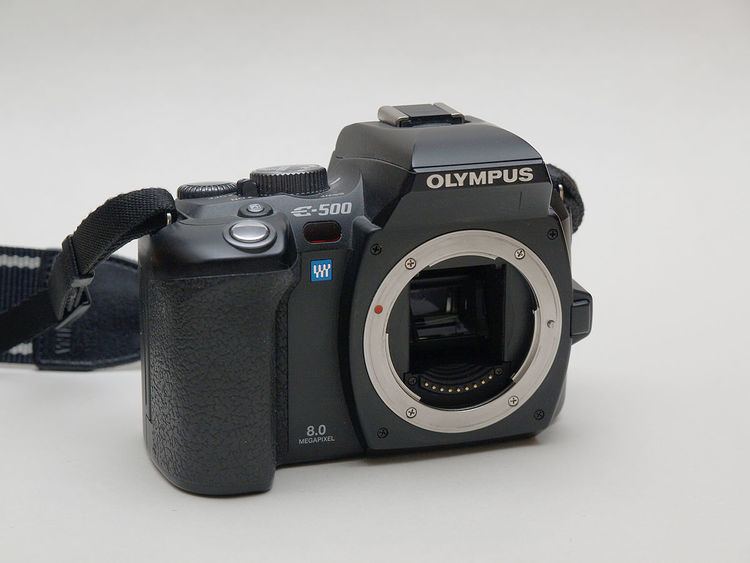ASA/ISO range ISO 50–3200 | ||
 | ||
Lens Interchangeable (Four Thirds mount) Maximum resolution 3,264 × 2,448 (8 million) Storage CompactFlash (Type I or Type II); XD card | ||
The Olympus E-500 (Olympus EVOLT E-500 in North America) is an 8-megapixel digital SLR camera manufactured by Olympus of Japan and based on the Four Thirds System. It was announced on 26 September 2005. Like the E-300 launched the previous year, it uses a Full Frame Transfer Kodak KAF-8300CE CCD imaging chip.
Features
Unlike the E-300 and the E-300's successor, the Olympus E-330, the E-500 retains the traditional SLR appearance, with a humped pentamirror box instead of the E-300's unique Porro mirror arrangement. The mirror box also bears the onboard flash, in similar manner to most recent consumer-level SLR cameras. The viewfinder hump means the E-500 is taller than the E-300, but in other dimensions it is smaller.
The E-500 uses Olympus' patented Supersonic Wave Filter dust reduction system to shake dust from the sensor during startup and when requested by the user; this largely eliminates the problem of dust accumulation on the surface of the image sensor. Image processing is done with Olympus' TruePic Turbo system.
Improvements over the E-300 include a 2.5-inch (64 mm) rear LCD screen, 49 zone metering (the E-300's total is undocumented, but believed to be 3), spot metering, an RGB histogram to identify clipping across the three color channels in post-shot review, optional improved noise filtering for low-light photography, and the ability to apply software color filters in black-and-white shooting.
In a buyers guide distributed by the UK Digital SLR magazine (December 06, 2nd edition), the Olympus E-500 camera was identified as an intermediate digital SLR camera — capable of functioning as a professional tool in most situations, well above what the average street price of £379 (at time of article) reflects.
The E-500 was available in five different packages in the United States; these were:
The successor to the E-500 is the E-510. Released in 2007, the E-510 provides several feature improvements including a new 10-megapixel Live MOS Sensor with claimed lower image noise at high ISO compared to the E-500, LiveView and in-body Image Stabilization in approximately the same body size as the E-500.
